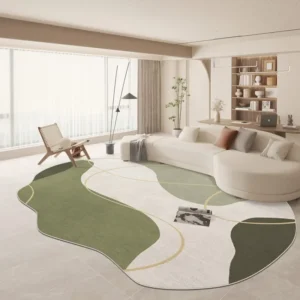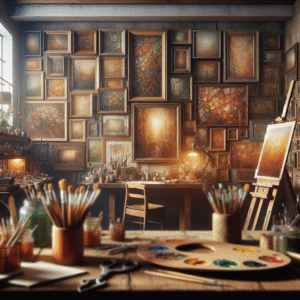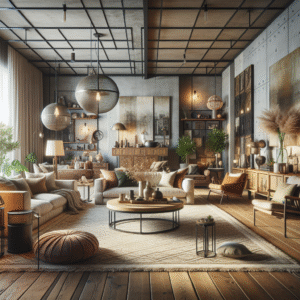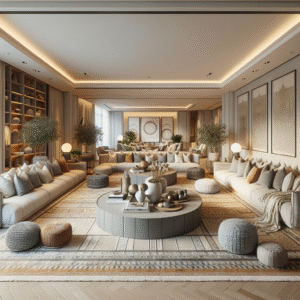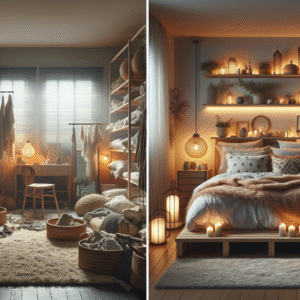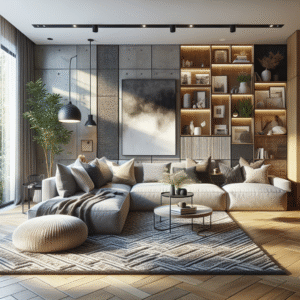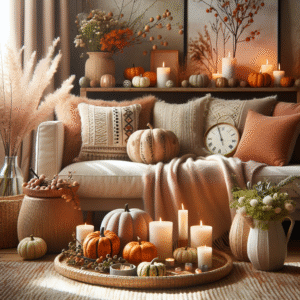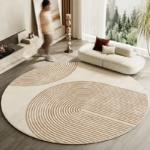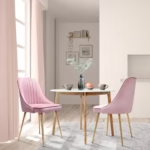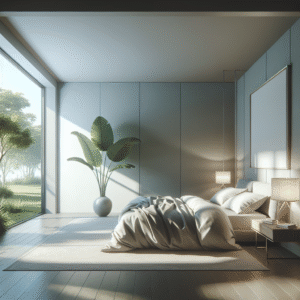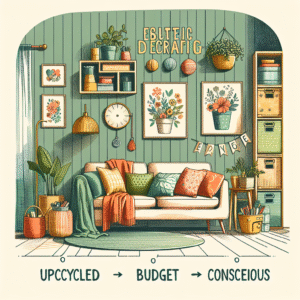<section>
<p itemprop="description">
Color psychology plays a vital role in shaping our emotions and behaviors. In wellness spaces at home, the right colors can enhance mood, reduce stress, and promote overall well-being. In this article, we will explore how to use color effectively in various spaces, offering practical steps to create a harmonious environment that nurtures your mind and body.
</p>
<p>
Whether you're optimizing your living room, bedroom, or workspace, understanding how color affects our psyche can be a game-changer. Let’s embark on a colorful journey that transforms your home into a haven of wellness.
</p>
<h2>Understanding Color Psychology</h2>
<p>
Color psychology is the study of how colors affect human emotion and behavior. Different colors evoke different feelings and reactions. For example, warm tones like red and orange can energize, while cool tones like blue and green can calm.
</p>
<h2>The Impact of Color on Wellness</h2>
<p>
Colors in our environment influence our mood, productivity, and stress levels. Research has shown that the right color in your surroundings can lead to better health, improved mood, and heightened creativity.
</p>
<h3>1. Color and Mood</h3>
<p>
Studies reveal that certain colors are associated with specific emotions. Yellow, for instance, may instill joy and creativity, while green may evoke feelings of tranquility and balance. Choosing the right color for spaces in your home can significantly affect your mental state.
</p>
<h3>2. Color and Productivity</h3>
<p>
Colors can also impact our productivity levels. In workspaces, blue can improve focus and efficiency, whereas red can stimulate energy but potentially lead to distractions.
</p>
<h2>Choosing Colors for Different Rooms</h2>
<h3>1. Relaxing Bedrooms</h3>
<p>
For bedrooms, opt for soothing colors such as soft blues, greens, or gentle earth tones. These hues encourage relaxation and a restful sleep environment, allowing you to recharge for the day ahead.
</p>
<h3>2. Energizing Living Rooms</h3>
<p>
To create an inviting and lively atmosphere in living rooms, consider vibrant colors like orange or warm yellows. These colors stimulate conversation and foster a sense of warmth.
</p>
<h3>3. Inspirational Workspaces</h3>
<p>
In workspaces, balance energizing colors like red with calm colors such as soft grays or whites to maintain focus without becoming overwhelmed.
</p>
<h2>Practical Steps to Implement Color Psychology</h2>
<h3>1. Color Swatches</h3>
<p>
Start by testing paint samples on walls to see how colors look in different lighting throughout the day. Decisions made in bright daylight may differ from those made under dim evening lights.
</p>
<h3>2. Accent Colors</h3>
<p>
Use accent colors in decorations, throw pillows, or artwork to add interest without overwhelming the space. This allows for an easy refresh without committing to a full color change.
</p>
<h3>3. Technology and Color</h3>
<p>
Utilize apps that simulate color palettes in virtual environments, helping visualize how colors mix and enhance your home's wellness spaces before making physical changes.
</p>
<h2>Real-Life Examples: Case Studies in Color Usage</h2>
<h3>1. The Zen Zone Bedroom</h3>
<p>
A family transformed their dull, gray bedroom into a serene space with soft green walls and bamboo accents. The result? Improved sleep quality and reduced stress levels reported by family members.
</p>
<h3>2. The Vibrant Living Room</h3>
<p>
A couple redecorated their living room with burnt orange curtains and yellow accent décor. They noted increased energy levels and improved family conversations, showcasing the positive impact vibrant colors can have.
</p>
<h2>Common Color Combinations for Wellness</h2>
<h3>1. Earthy and Natural</h3>
<ul>
<li>Soft browns with greens for a grounded feel.</li>
<li>Beige and light blues promote tranquility.</li>
</ul>
<h3>2. Bold and Inviting</h3>
<ul>
<li>Reds and yellows stimulate energy.</li>
<li>Pinks can create warmth and intimacy.</li>
</ul>
<h2>Frequently Asked Questions</h2>
<details>
<summary><strong>How does color therapy work?</strong></summary>
<p>Color therapy uses colors to balance energy and emotions, improving health by manipulating one's environment.</p>
</details>
<details>
<summary><strong>What colors are best for relaxation?</strong></summary>
<p>Soft blues and greens are typically most associated with creating calm and restful environments.</p>
</details>
<details>
<summary><strong>Can colors affect sleep quality?</strong></summary>
<p>Yes! Colors like cool blue can help create a tranquil environment conducive to sleep.</p>
</details>
<details>
<summary><strong>Is there scientific evidence for color psychology?</strong></summary>
<p>Numerous studies support the idea that colors impact emotions, cognition, and behavior, making it a recognized field in psychology.</p>
</details>
<details>
<summary><strong>How to combine colors effectively?</strong></summary>
<p>Use a dominant color paired with complementary accent colors to create balance and visual interest in spaces.</p>
</details>
</section>
<footer>
<h2>Conclusion: Transform Your Home with Color</h2>
<p>
Utilizing color psychology in your home wellness spaces can significantly enhance your emotional and physical well-being. By selecting appropriate colors for each area, you can create a balanced and inspiring environment that promotes health and happiness. Remember to consider the unique feelings different colors evoke and choose accordingly.
</p>
<p>
Begin your journey towards a more vibrant and harmonious home today! Explore our related articles on home design for further inspiration.
</p>
</footer>
</article>
<h4>Content Disclaimer</h4>
<hr>
<p>The information provided in this article is for educational purposes only and should not be considered professional advice. For specific inquiries, please consult a qualified expert.</p>
 African Grassland Animal Scenery Poster Autumn Canvas Painting Lion Zebra Giraffe Prints Pictures for Modern Home Room Decor
African Grassland Animal Scenery Poster Autumn Canvas Painting Lion Zebra Giraffe Prints Pictures for Modern Home Room Decor
 Large Area Green Rugs for Bedroom Nordic Living Room Decoration Shaped Carpet Irregular Plush Lounge Rug Home Thick Washable Mat Rated 5.00 out of 5$57.07 – $359.83Price range: $57.07 through $359.83
Large Area Green Rugs for Bedroom Nordic Living Room Decoration Shaped Carpet Irregular Plush Lounge Rug Home Thick Washable Mat Rated 5.00 out of 5$57.07 – $359.83Price range: $57.07 through $359.83 Nordic Style Rugs for Bedroom Morandi Living Room Decoration Carpet Large Area Geometry Lounge Rug Home Cloakroom Non-slip Mat Rated 5.00 out of 5$40.98 – $620.81Price range: $40.98 through $620.81
Nordic Style Rugs for Bedroom Morandi Living Room Decoration Carpet Large Area Geometry Lounge Rug Home Cloakroom Non-slip Mat Rated 5.00 out of 5$40.98 – $620.81Price range: $40.98 through $620.81






